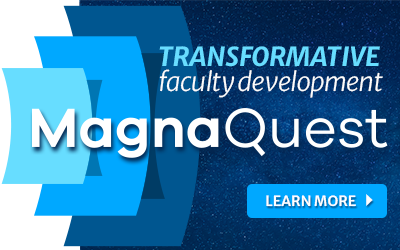Many countries are currently considering diversifying their higher education systems by modeling U.S. community college-like institutional designs.
Vietnam and China, along with other nations, are intrigued by, curious about, yet somewhat suspicious of American community colleges—especially in terms of their relationship to universities and higher learning.
How can one distinguish the cultural differences, in general, between community colleges and universities? Certainly one could consider faculty credentials, administrative staff preparation, academics, service focus, student “learning readiness,” institutional missions, vocational training—the obvious and usual. Community colleges do an ample job of preparing students for the next steps in their lives. They provide a valuable entry point for a richer participation in American society—and can potentially accelerate a student’s quality of life, both on the job and in the soul.
However, we believe there is a fundamental divergence in the culture of the community college that has to do with a social or class distinction criterion—we believe that community colleges have aspirations to prepare their students for entry into the middle class, while universities have aspired to pull their students out of the middle class.
We are not economists, political scientists, nor sociologists. We are simply steady observers of community college riffs and phrasings….
An examination of “class” differentiation mechanisms at American community colleges provides relevant insights about American value systems—and the desperate conformity magnified and then embraced by so many.
The dialectal response to community “middle class” composite cultural needs, economic needs, training needs—and response to university adjustments in academic articulation matters—keeps community colleges flexible and “organically” (as in 19th century romantic philosophy) reactive.
Community colleges, we believe, have become the protectors of the American middles [we have borrowed the contextual use of this term from the American novelist John Updike]. Although this is not consciously intended, community colleges have evolved into places of great tension—tension between developmental (remediation), academic, and vocational/occupational demands; tension between traditional (face-to-face) and online course offerings—and tension among local “stakeholders” concerning staff salaries, travel expenses, baccalaureate training, and bond elections.
The hopeful middles at the community college, our students, struggle to obtain training, to prepare for further schooling, to live and to love.
The emergence of “workforce development,” supported by ancillary academic programs, appears to be the actual driving force behind community college post-secondary-education “market share” positioning. Is this altogether bad? Poverty is not good. Yet, our notions of the middle class have both material and intellectual undertones.
We sense that 21st century middle-class America cares far more about its material well-being than its intellectual or humanistic self.
Surely, the American middle class is becoming more expansive in its demands for goods and services. Think of the size, configuration, amenities, and prestige of today’s modern American home. The trickle upward of buying power and the all-encompassing “religion of stuff” appears to be thriving—no matter what one thinks about the economic situation. Available “work” and accelerating salaries have driven the economy.
The idea of the community college [a priori] was certainly poetic, certainly beautiful, a metaphor for entrance into prosperous—and informed—American middle life. The post-WWII individual American experience has centered on the development of a (seemingly) nourished and materially satiated middle class. What do English Language Learning (ELL) training, General Educational Development (GED) training, and massage therapy training have in common? They are all entry-point activities to a better “quality” of life.
However, most of the “stuff” Americans harbor in their homes and hearts has done little to improve the “core” quality of lives. The entire middles-desired “standard of living” system is showing signs of near collapse in respect to current economic conditions (i.e., mortgage default rates, banking industry regulations, automobile industry failures, and credit card restructuring laws). What would one do without television and smart phones? (Save money, think, and reflect more? Spend less time filling in the bleakly lonely portions of life? Foster altruism?)
The middle class can be a fertile ground for illusions—big dreams and big payments—a life of “gilded” servitude, a standard of living that promises much but increasingly struggles to deliver a wholesome future.
Ah, but for all classes the middle endgame is perhaps, well, a dreamscape.
One can take this axiom to the “proverbial” bank: The more things one possesses, the more one is possessed by those things. Sadly, the middles’ intellect seems to be now vigorously centering on Disneyland fantasies, Caribbean cruises, summer blockbusters, and restaurant happy hours (where the “middle” really expands). The creation and maintenance of a standard of living, and making a living, is not mysterious.
Economists have carefully studied the relationships between behavior and the economy. The Institutionalist school of economics, for example, sees behavior as part of a larger social pattern influenced by current ways of living and modes of thought—but knowing how to live may be the greatest secret of all.
Wealth without sensitivity, without reflection, without conscience, creates a kind of tyranny in personal, domestic, and global understanding. What should the middles’ intellectual values reflect? How should vocational, avocational, and intellectual meaning offered by American community colleges trisect for the “ambiguous” middles? How often do community college instructors hear the phrase—“Oh, I’m just taking these classes [English, math, history—insert name of academic courses] to get them out of the way”? Many may nod in gentle agreement, empathetic to the view that coursework of any kind is simply preparation for the world of work and ownership—a rite of passage into the middles. The place where many of us may, too, live and function….
During the last 15 years, the (at times) repressive nature of corporate management models at the community colleges has, perhaps, changed the relationships between students and staff. Certainly college staff (especially faculty and administration) depends on student enrollment (and fees) to support their own enhanced middle-class aspirations.
We are not hinting at class exploitation so much as we are describing an emerging truth—in the community college formula, faculty and administrators have developed a symbiotic relationship with students. The students’ success stories advertently elevate employee status (and incomes), and by helping more students INTO the middle class, administrators and faculty may—by virtue of their actions—be elevating themselves OUT of the middles.
Even so—those of us who work in academic disciplines at the community colleges should continue our most important task: promoting how to live and how to improve the quality of the intellectual life—not just how to make a living. Poverty of spirit, we believe, is the worst kind of destitution.
What do we hope the newly emerging international models of the community college (and higher education in general) emphasize? What capitalist and corporate accouterments will they convey? How will these institutions improve the quality of their students’ lives?
With the ability to teach globally via online learning systems, community colleges AND universities have limitless opportunities to influence how [both positively and negatively] our international neighbors perceive American higher education and American values. Let’s be careful of the values system that we export. It may be time to rethink the idiomatic daydreams we create in the middles and in “middle” education….
Let’s be sure we export the best of the American experience. Let’s convey a learning culture that improves living standards, morality, ethics, and a far deeper sense of life’s meaning beyond apparent economic gains. If American education is viewed only as a “money maker” for all parties involved, then our reputation—deserved or otherwise—as a selfish capitalist nation may persist. Education [in its purest sense the liberal arts tradition] should constitute more than a simple means to an economic end.
Jeffrey Ross is an English instructor at Central Arizona College. Jann M. Contento is an institutional researcher at Estrella Mountain College. They have co-authored various articles on American culture, collegiate curricula development, and the media’s impact on community.
Reprinted from “Higher Education: Exporting Middle-Class Dreams” in Academic Leader 26.6(2010)7,8 © Magna Publications. All rights reserved.



